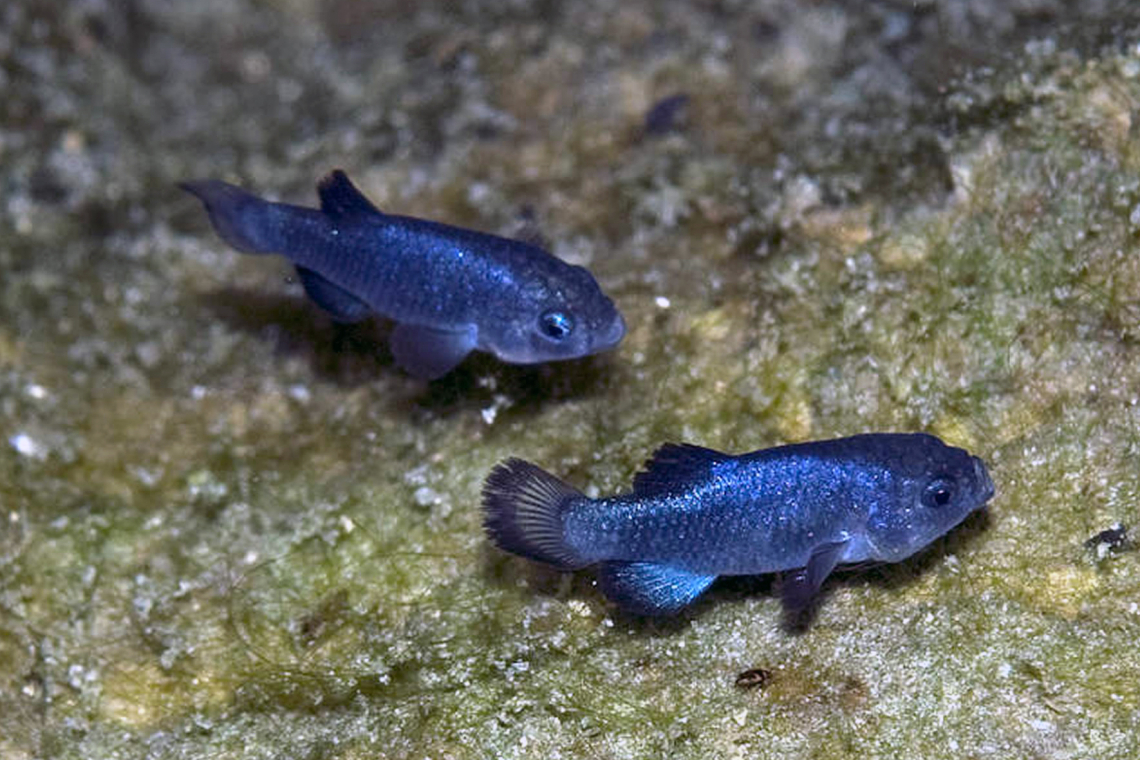Unsurprisingly the threats to these exceptional little fish are entirely human-caused. The pressure is increasing for the fish as groundwater pumping, pollution, construction projects, pesticides and non-native species continue to claim more and more pupfish.
Pupfish, a bit of introduction, what are they?
A few key examples of different pupfish species and their habitats
How do pupfish live in these places?
The pupfish have a remarkable trump card that gives them the ability to live in such hostile locations: Pupfish display some of the most rapid morphological diversification found in any animal on the planet. When a pupfish species ends up in a new environment, they can be comfortable and well-adapted in much fewer generations than other animals; this means they’re typically successful in habitats where different species are not, which reduces competition. Pupfish are generalist feeders. They eat plankton, algae, vegetation, and tiny invertebrates, but some have developed into much more niche feeders due to their evolutionary traits.
Pupfish rarely coexist with one another, although there is a group of three species called the San Salvador pupfish that live in San Salvador Island’s salty lakes. They exhibit one of just two examples of coexistence between pupfish species. They also evolve between 30-150 times faster than any other pupfish, which is the fastest diversification of any fish ever found. One of these three species has evolved to eat nothing other than the other two species’ scales. This trait has only been recognised 14 times in other fish groups, and out of the 1500 ray-finned fish, not a single one eats just scales. The DNA enabling this behaviour is completely novel. With such powerful adaptive capabilities, it’s surprising that they are under such considerable threat.Threats to pupfish
Unsurprisingly the threats to these exceptional little fish are entirely human-caused. The pressure is increasing for the fish as groundwater pumping, pollution, construction projects, pesticides and non-native species continue to claim more and more pupfish. 500 devils hole pupfish are reduced to just 35 over the course of 50 years. Many other species have seen similar reductions. The Comanche Springs Pupfish, endemic to west Texas, saw large areas of its habitat completely dried up due to water extraction. Fortunately, as they were on the brink of extinction, a conservation pool was built. New survey methods have shown that this restored habitat has been incredibly successful. Studies on the population are revealing significant growth.
Conservation efforts are more simple when dealing with small systems like the ones in which pupfish live. Although they are still in very hot water, it’s fantastic to see how attitudes change over time. In the 1970s, there was a social movement called “kill the pupfish” due to the restrictions placed on water extraction from their habitats. Today reservoirs are better protected, and there are many more projects to keep beautiful creatures like these from going extinct.
Shop for a cause
Shop on amazon.com | amazon.co.uk




